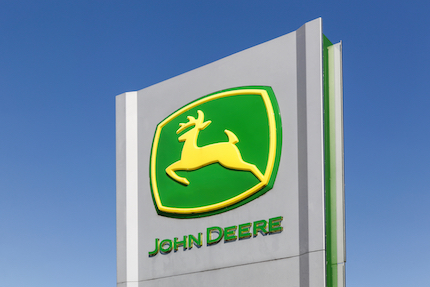One of my favorite investors (other than Warren Buffett) is Jim Rogers. He and many other high-profile investors have been talking up the prospects for investments in agriculture for the past 20 years.
It’s easy to see why.
The United Nations estimates that, by 2050, we will need to feed an additional 1.82 billion people on the planet, a 23% rise from the current global population. Two-thirds of this added population will be in Africa.

Throw in worsening soil and water degradation (and water shortages), rising global demand for animal protein from the emerging economies, increased urbanization in developing countries leading to agricultural labor shortages as workers move to the cities, and the investment case is obvious.
The big question we humans face is: how will we be able to significantly boost global food production to feed billions more people, all while limiting pressures on our natural environment?
A major part of a solution to this massive problem must be an all-out effort to increase farm automation. This move toward the automation of agriculture has just begun to gather momentum.
Agricultural Automation
The roll-out of robotics, drones, and computer vision software is transforming agriculture as farmers attempt to strike that delicate balance between the need for increased yields and taking care of the environment.
The agricultural automation roll-out is being aided by the arrival of 5G technology. For example, 5G enables drones to transmit high-definition images of agricultural land, as well as monitor livestock and engage in pest control.
In this new age of automation, or “precision agriculture,” on the farm, data becomes crucial. The data gathered is used to help farmers make more efficient use of their land, water, and fertilizer. It is gathered by the aforementioned drones, along with satellites and “smart” farm equipment.
Data collection is the fuel for technologies, such as artificial intelligence (AI) and machine learning, which are becoming more and more crucial to the global agricultural industry every day.
At the 2021 Consumer Electronics Show (CES), Julian Sanchez, director of emerging technology for Deere, was asked about the future of precision agriculture. He answered: “If we’re thinking about using the metaphor of a baseball game, we might say we’re in the seventh inning, but it’s the first game of a seven-game series.”
I believe he is correct, as agriculture is the sector most exposed to climate change.
With all of these trends, not to mention sharply rising prices for many agricultural commodities, the United Nations’ Food and Agricultural Organization (FAO) said global food prices are at 10-year high, after having soared 28.1% in 2021 from 2020 levels.
You now have ideal conditions for companies that make advanced agricultural equipment.
The Leading Company in Agtech
Number one on this list is Deere (DE), which announced not long ago that its fully autonomous tractor is ready for large-scale production.
It’s a pretty cool tractor. Six pairs of stereo cameras enable the tractor to complete a 360-degree scan to detect obstacles while it is cultivating, seeding, or harvesting. The 8-series tractor calculates distance to a tolerance of less than one inch, while the use of seeds, water and pesticides is optimized through advanced software and global positioning thanks to real-time access to video, data, and metrics from the John Deere Operations Center.
So, farmers only need to transport the tractor to a field and configure it for autonomous operation. Then let the tractor do the work.
Deere will also offer its automation system as a kit that can be installed on its other tractor models. This will widen the market potential of its technology substantially.
The company will likely also grow its repeat revenues business since its autonomous system will require multi-year digital upgrades. This is very similar to the model popular with Wall Street and used by software companies—the software-as-a-service (SaaS) model.
The company’s chairman and CEO, John May, said that he anticipates “demand for farm and construction equipment [will] continue benefiting from favorable fundamentals,” while highlighting “the growing engagement with [Deere’s] digital platform.”
Given Deere’s relatively modest valuation when compared to some other blue-chip companies, it looks like a great low volatility, lower-risk option for investors looking to profit from the profound changes underway in agriculture.
The stock is a buy anywhere in the $365 to $385 range.





